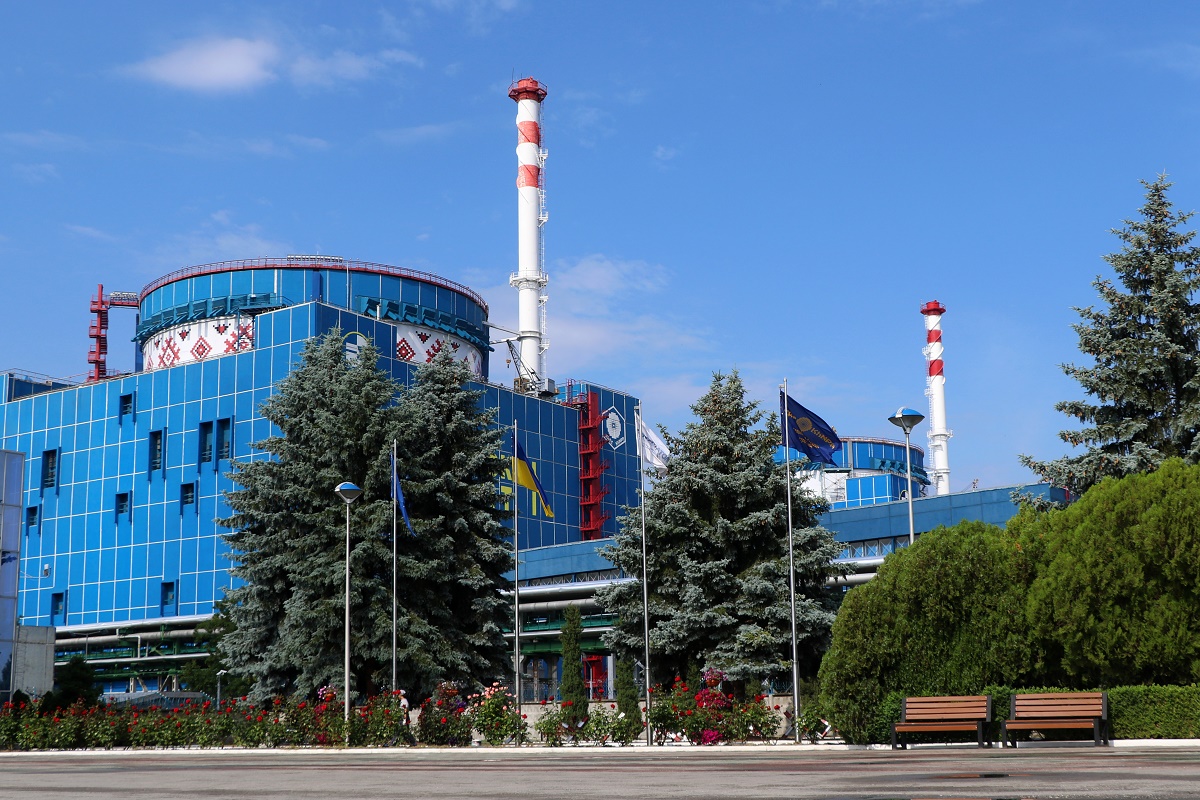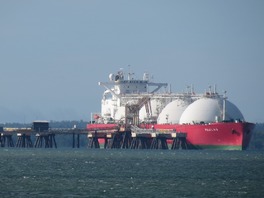The US may take Ukrainian nuclear power plants under its "guardianship" . And we are talking not only about the Zaporizhzhia NPP, which has been occupied by the enemy for three years, but also about those that are under the full control of Ukraine. "Apostrophe" investigated, as far as possible, whether such a step makes sense, whether it is associated with risks, and, importantly, whether electricity tariffs will increase as a result.
The US claims not only Ukrainian mineral resources, but also our electricity infrastructure. According to American officials, the issue of ownership of Ukrainian electricity facilities is being discussed as part of President Donald Trump's peace initiatives.
Ahead of his phone call with Russian President Vladimir Putin on March 18, Trump said that he would, among other things, "talk about power plants."
Considering that the American president later admitted that before the official telephone conversation with his Russian counterpart, he had several secret conversations with him, it can be assumed that the topic of power plants had been raised by them before.
Initially, it was assumed that the subject of discussion would be the Zaporizhzhia NPP - the largest nuclear power plant in Ukraine and all of Europe, which has been under Russian occupation for three years. Transferring the Zaporizhzhia NPP to US control could become one of the compromises in the peace negotiations between the parties.
However, later they began to speak of nuclear power plants in the plural.
"The United States could be very useful in managing these power plants with its expertise in electricity and utilities," said a joint statement from US Secretary of State Marco Rubio and US President's National Security Advisor Mike Waltz.
The possibility of transferring Ukrainian nuclear power plants under US control was also confirmed by Energy Secretary Chris Wright: " We have tremendous technical experience in the United States to manage these plants."
And finally, on March 24, Donald Trump actually specified what he had said earlier, stating that the issue of ownership of Ukrainian power plants was being discussed during the negotiations.
At the same time, the Ukrainian side continues to insist that only joint management of the Zaporizhzhia Nuclear Power Plant with the United States is being discussed.
A chance for the ZNPP?
There are a total of five nuclear power plants in Ukraine. The Chernobyl NPP was decommissioned in 2000. On February 24, 2022, the Chernobyl NPP was captured by the Russian military, and on March 31, it was liberated. The Zaporizhzhia NPP has been occupied by Russia since March 4, 2022. The Khmelnytskyi, Rivne, and South Ukraine NPPs remain in operation.
Is it possible, in principle, to transfer control over our nuclear power plants to the American side?
"They are owned by the Ukrainian people and managed by the government. And the government may well enter into some kind of consortium management or transfer management to someone. I don't see any particular problems here ," energy expert Andriy Zakrevsky said in a comment to Apostrophe.
According to Stanislav Ignatiev, Chairman of the Board of the Ukrainian Renewable Energy Association and founder of the Kharkiv Energy Cluster, there is indeed no explicit prohibition in the legislation on the ownership of Ukrainian power plants by anyone.
"However, according to the agreement between Energoatom and Euratom, Energoatom has a loan of 300 million euros, which must be repaid by 2031. And until Energoatom repays this loan, there will be no possibility of transferring management - or any other form (of control) - to other individuals or legal entities, residents or non-residents ," the expert told the publication. " But the agreement has the following interpretation: if Euratom does not object to the transfer of rights, then this will be possible, or - if there is a default by one of the parties. And, perhaps (in the event of a default by Energoatom - Apostrophe) the American side will cover this debt."
Experts support the idea of transferring control of the Zaporizhia NPP to the American side.
One option is to act through the IAEA, of which the United States is a member.
"There are directives on management, and, as an option, it was possible to go through the IAEA ," says Andriy Zakrevsky. " But this should have been done a long time ago, and our regulator should have banned the operation (of the Zapad nuclear power plant)."
According to Stanislav Ignatiev, transferring the Zaporizhzhia Nuclear Power Plant under US control is almost the only way to free it from occupation.
At the same time, the control package should also include Zaporizhzhia TPP (part of Rinat Akhmetov's DTEK - "Apostrophe"), which ensures the balancing of the ZNPP operation, as well as the city of energy workers Energodar and the access roads to the station.
"That is, if this agreement works, if the occupier agrees to it, it will lead to the deoccupation of hundreds of square kilometers, and this, of course, is a big plus," Ignatiev said.
Removing the ZNPP from Russian control is also necessary to restore proper maintenance of the plant, in particular with regard to American Westinghouse fuel.
You can, but why?
However, when it comes to other Ukrainian nuclear power plants, there is no such obvious clarity.
"This is nonsense, and it doesn't really give us anything," Andriy Zakrevsky is convinced.
In particular, according to him, American control will not become an additional guarantee of the safety of these facilities from Russian shelling.
In turn, Stanislav Ignatiev believes that, by analogy with the announced agreement on minerals, the Americans could only enter into new projects in our nuclear energy sector.
"It would be very good if the same Westinghouse with American roots entered the construction of power units at the Khmelnytskyi NPP ( the state has very big plans for Khmelnytskyi NPP - "Apostrophe"), - says the expert. - This will not only solve the problem of electricity, but also help turn Ukraine into a major energy hub for the countries of Eastern Europe."
By the way, Ukrainian energy is not only nuclear power plants, but also, for example, thermal power plants. The state-owned company "Centrenergo" includes the Trypilska TPP in the Kyiv region, the Zmiivska TPP in the Kharkiv region, and the Vuglehirska TPP in the Donetsk region. The latter is occupied by the enemy, while Trypilska and Zmiivska were actually destroyed as a result of enemy missile attacks.
DTEK is an important player in the domestic thermal power generation market. Most of its CHP plants are either under occupation or destroyed.
Before the Russian invasion, the state had plans to privatize Centrenergo, and perhaps they will be able to realize them after peace or at least a truce. Although the severe destruction of the plants will likely make it difficult to sell the company.
It is also quite possible that DTEK will decide to get rid of some of its problematic energy assets.
However, it is hardly worth counting on Americans' special interest in our thermal power plants, or rather, in what is left of them.
"Today, 94% of thermal generation is either destroyed or severely damaged. In addition, thermal power plants are morally obsolete, it is very difficult to manufacture equipment for them, we have lost a lot of coal production, so it is difficult to provide them with raw materials ," says Stanislav Ignatiev. " It is more expedient to consider these plants as energy platforms for new interesting projects - primarily gas shunting generation, since it is much cheaper than building a new thermal power plant or small modular reactors (which are also capable of providing maneuverability - "Apostrophe")."
The advantage is that thermal power plants, even completely destroyed ones, have all the necessary energy infrastructure that new energy facilities built in their place can use.
What about electricity tariffs?
If American capital enters Ukrainian energy projects – nuclear or otherwise – the new owners of generation facilities are unlikely to want to operate at a loss. And this could become a reason to increase electricity tariffs for the population.
"Any business, not just American, will strive to sell electricity at market prices. And the market price here today is from 9 to 11 hryvnias per 1 kilowatt-hour, depending on the region," Oleg Popenko, head of the Union of Consumers of Public Utilities, said in a comment to Apostrophe.
However, electricity tariffs in Ukraine are not set by energy companies, but by the regulator - the National Commission for State Regulation of Energy and Utilities (NCRECU).
"Our National Commission for the Regulation of Energy and Utilities of Ukraine is a relatively independent body, so there is no need to fear that the influence of international partners will lead to a significant increase in the price of electricity," says Stanislav Ignatiev.
We will remind you that after the price increase on June 1, 2024, Ukrainians will pay 4.32 hryvnias per 1 kilowatt-hour, and the difference between this preferential tariff and the market rate will be covered by two state-owned companies - Energoatom and Ukrhydroenergo. If this practice continues, it is quite possible that there will be no need to increase electricity prices for the population for some time. However, if the nuclear power plants, which are currently part of NNEGC Energoatom, come under American control, it will be increasingly difficult to do so.
In addition, as part of European integration, Ukraine will be forced to raise tariffs to the European level (in the EU, tariffs vary from 15 to 40 eurocents - from 6.75 hryvnias to 18 hryvnias - for 1 kilowatt-hour).
"This awaits us, I think, even without American partners - it's just a matter of time," Oleg Popenko summed up.



